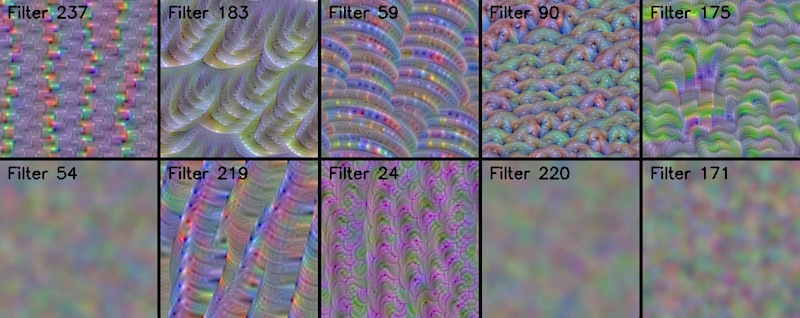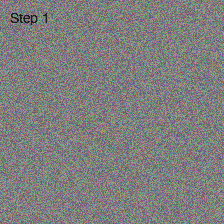Keras Visualization Toolkit
keras-vis is a high-level toolkit for visualizing input images via guided backprop. There are several repositories out there to visualize:
- Activation maximization
- Saliency and class activation maps
- Caricaturization (deep dream)
- Texture/Artistic style transfer
- Any other guided image backprop
This toolkit generalizes all of the above as energy minimization problems with a clean, easy to use, and extendable interface. Compatible with both theano and tensorflow backends with 'th'/'tf' image dim orderings.
Quick links
- Read the documentation at https://raghakot.github.io/keras-vis.
- Join the slack channel for questions/discussions.
- We are tracking new features/tasks in waffle.io. Would love it if you lend us a hand and submit PRs.
Getting Started
In image backprop problems, the goal is to generate an input image that minimizes some loss function. Setting up an image backprop problem is easy.
Define weighted loss function
Various useful loss functions are defined in losses. A custom loss function can be defined by implementing Loss.build_loss.
from vis.losses import ActivationMaximization
from vis.regularizers import TotalVariation, LPNorm
filter_indices = [1, 2, 3]
# Tuple consists of (loss_function, weight)
# Add regularizers as needed.
losses = [
(ActivationMaximization(keras_layer, filter_indices), 1),
(LPNorm(model.input), 10),
(TotalVariation(model.input), 10)
]Configure optimizer to minimize weighted loss
In order to generate natural looking images, image search space is constrained using regularization penalties. Some common regularizers are defined in regularizers. Like loss functions, custom regularizer can be defined by implementing Loss.build_loss.
from vis.optimizer import Optimizer
optimizer = Optimizer(model.input, losses)
opt_img, grads, _ = optimizer.minimize()Concrete examples of various visualizations can be found in examples folder.
Installation
-
Install keras with theano or tensorflow backend
-
Install OpenCV
sudo apt-get install python-opencv- Install keras-vis
From sources
sudo python setup.py installPyPI package
sudo pip install keras-visVisualizations
Neural nets are black boxes. In the recent years, several approaches for understanding and visualizing Convolutional Networks have been developed in the literature. They give us a way to peer into the black boxes, diagnose mis-classifications, and assess whether the network is over/under fitting.
Guided backprop can also be used to create trippy art, neural/texture style transfer among the list of other growing applications.
Various visualizations, documented in their own pages, are summarized here.
Conv filter visualization
Convolutional filters learn 'template matching' filters that maximize the output when a similar template pattern is found in the input image. Visualize those templates via Activation Maximization.
Dense layer visualization
How can we assess whether a network is over/under fitting or generalizing well?
Attention Maps
How can we assess whether a network is attending to correct parts of the image in order to generate a decision?
Caricaturization (deep dream)
TODO
Neural Style Transfer
TODO
Generating animated gif of optimization progress
It is possible to generate an animated gif of optimization progress. Below is an example for activation maximization of 'ouzel' class (output_index: 20). This example also shows how to use the optimizer directly.
from vis.utils.vggnet import VGG16
from vis.optimizer import Optimizer
from vis.losses import ActivationMaximization
from vis.regularizers import TotalVariation, LPNorm
# Build the VGG16 network with ImageNet weights
model = VGG16(weights='imagenet', include_top=True)
print('Model loaded.')
# The name of the layer we want to visualize
# (see model definition in vggnet.py)
layer_name = 'predictions'
layer_dict = dict([(layer.name, layer) for layer in model.layers[1:]])
output_class = [20]
losses = [
(ActivationMaximization(layer_dict[layer_name], output_class), 2),
(LPNorm(model.input), 10),
(TotalVariation(model.input), 10)
]
opt = Optimizer(model.input, losses)
opt.minimize(max_iter=500, verbose=True,
progress_gif_path='opt_progress')





